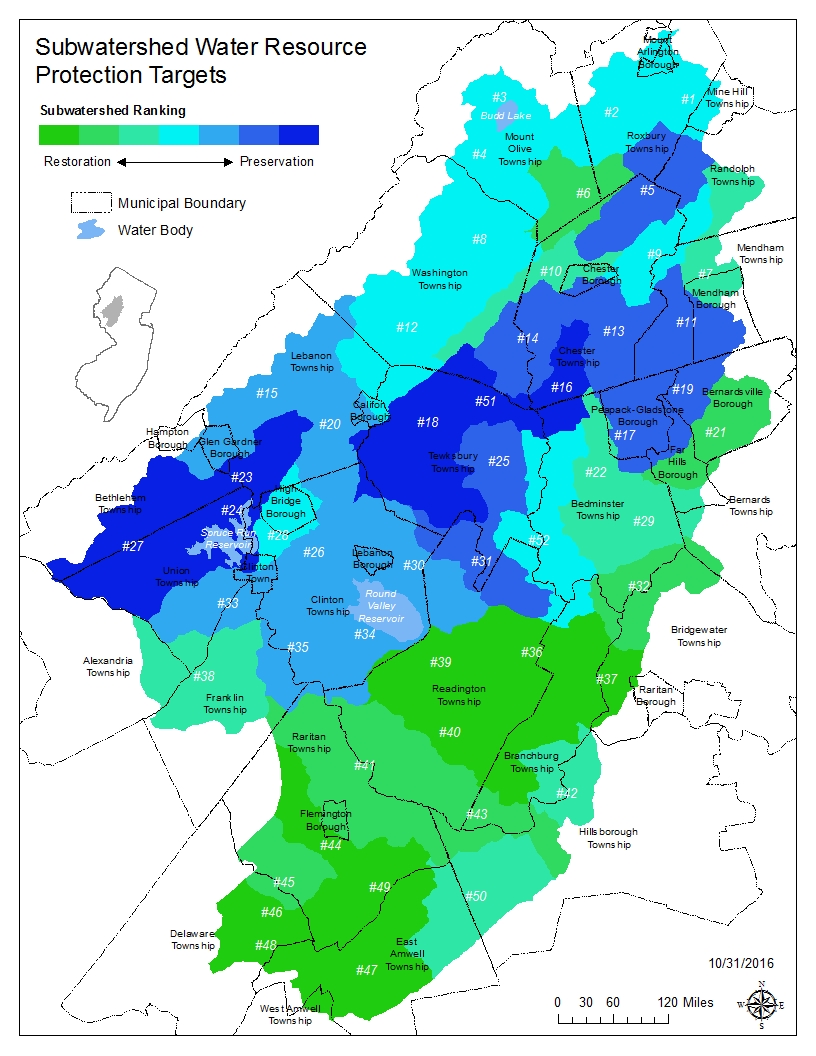The Plan
The Watershed Conservation Plan provides a framework for prioritizing conservaton and land preservation projects of Raritan Headwaters and our partners in the watershed. The Upper Raritan Region is made up of 52 subwatersheds. We developed a prioritization spectrum for each subwatershed going from the extreme of high need for restoration (high urban land cover and/or traditional agriculture with poor water quality) on one end and high need of preservation (lots of forest left and good water quality) on the other extreme. Many of the subwatersheds have a mixture of both restoration and preservation needs.
The Problem
Between 1995 and 2012, about 6,000 acres of forests and wetlands were lost in the watershed. Over 12,ooo acres of farmland were lost. They were replaced with residential and commercial development. The result has been an increase in impervious cover such as pavement and buildings, which results in pollution-rich stormwater running off into our streams and rivers instead of infiltrating into our underground aquifers.
The Solutions
Protection of remaining forest and wetlands in this headwaters region is critical to maintaining surface and groundwater quality. Farmland preservation is also important in reducing the amount of impervious cover in a watershed. Farmland preservation must coincide with restoration and agricultural BMPs that decrease erosion, maintain stream buffers, protect wetlands, conserve water and require lower inputs of pesticides and fertilizers. Furthermore, existing farms and suburbs need to be retrofitted to restore ecosystem function of providing abundant, clean water with improved stormwater infrastructure, such as rain gardens, vegetated bioretention basins, and other forms of green infrastructure. Everyone who lives and works in the watershed plays a role in maintaining our water supply. Our River-Friendly programs provide guidance in implementing practices that will not harm our streams and aquifers. What we do around our homes, businesses, schools, parks and golf courses when multiplied over the watershed has a tremendous impact on our water. To learn more about what YOU can do to protect water and other natural resources, visit NJ River Friendly

